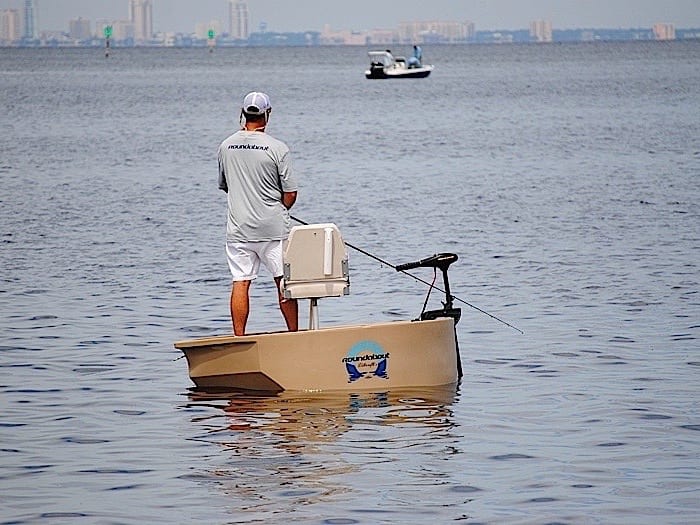
Welcome back to part two on our series: Sight Fishing for Redfish. If you haven’t read part one, I urge you to do so now. But if you’re ahead of the game and ready to dive in to part two, then let’s get right into it. To recap, we talked about some basic equipment needed and tactic to use. This included polarized sunglasses, the art of stealthiness, and utilizing all of your senses when stalking redfish. In the upcoming paragraphs, we will focus on things such as the importance of the tides, sun positioning, and lure/bait placement. All these tips combined will have you well on your way to sight fishing redfish, and hopefully, being successful at it!
One important factor when heading out to sight fish reds are the tides. The tides can play an important role when it comes to locating hungry redfish. I personally like fishing an incoming, high flood tide. On a high tide, areas that aren’t usually accessible by redfish become a smorgasbord of crabs, small fish, shrimp and anything else that a redfish might find delicious. Slowly and silently pole your way through flooded grass and surely you’ll see the telltale signs of redfish in the area. Backs out of the water, wakes being pushed, bait scattering or even a tail protruding from amongst the grass are all great ways to spot redfish. Alternatively, fishing an outgoing tide can produce just as much action. But instead of fishing the flooded grass, try working the mouths of any creeks and/or small, shallow water bays and inlets. Here fish will stage and wait for their meals to be flushed out of the areas that are draining. Again, you’ll want to look for those same telltale signs.
Next up, sun positioning and weather in general. Weather plays a factor when it comes to the art of sight fishing. Cloudy or windy days can make spotting subsurface redfish a bit more challenging so be sure to take that into consideration when venturing out. On a sunny day however, sight fishing can be phenomenal. But with that being said, it is important to use that sun to your advantage. I like keeping the sun at my back. This way I am not looking into the sun when stalking redfish and the redfish must look into the sun to spot me. This is the preferred method and generally yields good results, but be wary of one important thing: shadows. Since the sun will be at your back, you will cast a shadow in the direction of your target. The shadow will vary depending on the height of the sun. A shadow falling over an unsuspecting redfish is sure to alert them and they will potentially swim off in a hurry. Look beyond your shadow for signs and stop before your shadow tips them off.
Now that you have your target in sight, you must present the bait/lure to them to complete the process. This may be the single most important part in the whole process. Making that fist cast count can be the difference between drag screaming smiling or hanging your head low frowning. Practice makes perfect, so practice your accuracy in the yard or anywhere you get a chance. It’ll pay off. Your bait/lure placement depends on what the fish is doing. If it’s on the move, you will want to lead him. Not too far to where he may change course, but not too close as to spook it off. You need to find that sweet spot and sometimes that may take some practice. If your fish is rooting around on the bottom (tail out the water) then position your bait nearby, preferably in the direction it is facing and let it sit. Give it a twitch every few seconds if working an artificial and more than likely it will be found.
Practice makes perfect and you won’t catch them all, but you can certainly increase your odds by following these few and simple guidelines. But once you put all the pieces together, you will have a fantastic time outsmarting the mighty redfish!

